Best Core i9 laptops 2024
Need a laptop with some serious horsepower? These laptops with Core i9 and Core Ultra 9 chips won't disappoint.
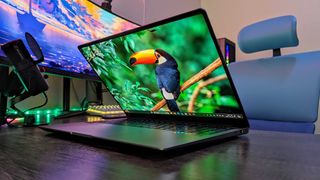
• The list in brief
1. Best overall
2. Runner-up
3. Best gaming
4. Most power
5. Premium gaming
6. Best for creators
• How to choose
Looking for a laptop that's capable of powering through heavy workloads or driving a top-notch gaming experience? Some of the best options on the market are systems equipped with one of Intel's Core i9 or Core Ultra 9 processors. These beastly mobile chips are some of the most performant CPUs that have ever been put into computers and truly shine when paired with high-end discrete laptop GPUs. Whether you're a gamer or a professional, you can count on this hardware to deliver the horsepower you need.
Core i9 and Core Ultra 9 laptops have become increasingly common in recent times, which means if you're looking to pick one up yourself, you're spoiled for choice. Most options are available with an industry-leading display, modern and sleek design, and premium features.
Although Dell's XPS 16 and Samsung's Galaxy Book4 Ultra are a couple of favorites that we've tested and reviewed, there are some amazing alternatives available for gamers and professionals. You'll find a full list of them here, along with in-depth overviews of each one that highlight what makes them special.
The quick list
Before we dive into a closer look at each laptop — including review highlights, pros, and cons — it's worth checking out this quick list of our favorite Core i9 and Core Ultra 9 laptops. You might find what you need right here.
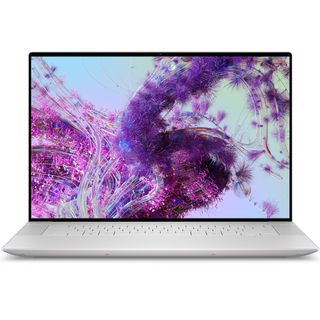
Best overall
With up to an Intel Core Ultra 9 185H CPU, NVIDIA RTX 4070 Laptop GPU, UHD+ OLED display, and unique, futuristic design, the XPS 16 (9640) is our top pick when it comes to laptops with Intel's most powerful chips.
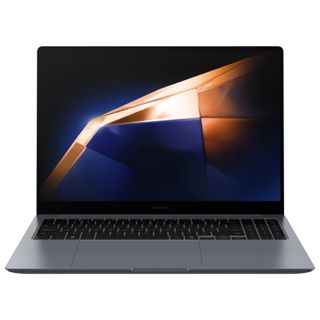
Runner-up
Samsung's Galaxy Book4 Ultra is a thinner and lighter alternative to the XPS 16. It has a more traditional design, but it boasts a gorgeous AMOLED display, Core Ultra 9 185H CPU, NVIDIA RTX 4070 Laptop GPU, and a better selection of ports.

Best gaming
The Legion Pro 7i (Gen 9) is the right choice for most gamers thanks to super performance from a Core i9-14900HX CPU and up to an NVIDIA RTX 4090 Laptop GPU. The QHD+ display has a 240Hz refresh rate with Dolby Vision and G-Sync, the keyboard is great, and there's RGB lighting everywhere.
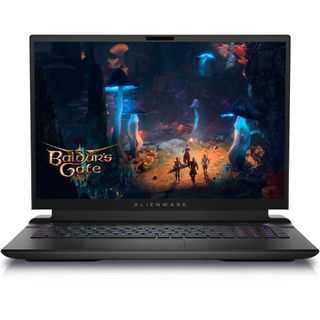
Most power
Alienware's m18 R2 is a big gaming laptop that stands out for its aggressive design and monster power. Get it with a Core i9-14900HX CPU and up to an NVIDIA RTX 4090 Laptop GPU, and enjoy the QHD+ display with 165Hz refresh rate and NVIDIA G-Sync.

Premium gaming
For those with deep pockets, there is always the Razer Blade 18. It's much more sleek than the Alienware option, yet it boasts a Core i9-14900HX CPU with up to a NVIDIA RTX 4090 Laptop GPU. The display comes in mini-LED with 300Hz refresh rate or 4K at 200Hz.
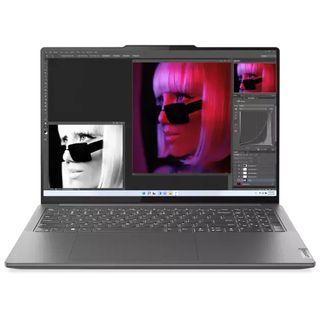
Best for creators
This beautiful creator-focused laptop often gets overlooked, but its Core i9-13950H CPU, NVIDIA RTX 4060 Laptop GPU, and 3.2K mini-LED display are very attractive. Audio quality is great, the keyboard is comfortable, and the system is easy to carry.
Our favorite Core i9 and Core Ultra 9 laptops in 2024
Why you can trust Windows Central
Whether you're looking for a premium workstation, a system that eats the latest games for breakfast, or something in between, one of these Core i9 or Core Ultra 9 laptops will be a great fit for you. We've tested and reviewed all recommended models here at Windows Central, so we have a clear idea of what's worth your time and money.
Best overall
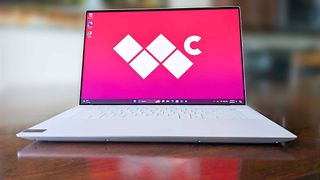

Specifications
Reasons to buy
Reasons to avoid
Dell's XPS 16 (9640) is one of our favorite AI PCs if you're looking for a lot of power in a slim and modern design. The lattice-free keyboard, touch function buttons, and seamless glass haptic touchpad might take some getting used to, but the features come together to create a beautiful laptop.
There are a number of configurations available at a cheaper price, but I'm focusing here on the Core Ultra 9 185H CPU available with either an NVIDIA RTX 4060 or RTX 4070 Laptop graphics card (GPU). These models have up to 64GB of LPDDR5x-6400MHz RAM (soldered), as well as up to 4TB of M.2 PCIe 4.0 NVMe solid-state drive (SSD) storage.
Two 16.3-inch displays are available no matter the config. The entry option has a 1920x1200 (FHD+) resolution, anti-glare finish, 500 nits brightness, and 120Hz variable refresh rate (VRR) to be easier on the eyes. For about $300 more, an OLED display with 3840x2400 (UHD+) resolution, anti-reflective finish, and 120Hz VRR is available.
Windows Central's Rebecca Spear reviewed the XPS 16 (9640) with OLED display, in which she noted that it "makes for a beautiful viewing experience when playing games, watching shows, or working in creative software."
Read our in-depth review: Dell XPS 16 (9640) review: A gorgeous AI PC, but divisive design
Runner-up
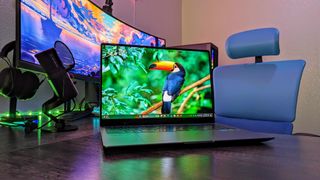

Specifications
Reasons to buy
Reasons to avoid
I recommend to those who aren't interested in Dell's overhauled XPS design the Samsung Galaxy Book4 Ultra. It's a relatively thin and sleek 16-inch clamshell notebook that can deliver performance nearly on par with a gaming laptop, and it's a great fit with other Galaxy products thanks to the bevy of Samsung software on board.
We consider the Galaxy Book4 Ultra the best laptop with a number pad, and its massive touchpad makes for easy pointing. It offers a good selection of ports (including dual Thunderbolt 4, HDMI, microSD card reader, and more), it has four speakers with Dolby Atmos for excellent sound, and there's a fingerprint reader for Windows Hello.
Performance is superb thanks to the Intel Core Ultra 9 185H CPU paired with an NVIDIA RTX 4070 Laptop GPU, up to 32GB of LPDDR5x-7467MHz RAM (soldered), and a 1TB M.2 PCIe 4.0 NVMe SSD. Battery life could be better, and those who want the longest runtimes should stick with the XPS 16. Still, we saw between five and six hours of real-world life in testing with a Core Ultra 7 model.
Windows Central' Zachary Boddy reviewed the Galaxy Book4 Ultra, remarking about the 16-inch AMOLED display, "Solid color accuracy and a very consistent white balance are great for content creation, vibrant colors and perfect contrast are great for media consumption, and a high refresh rate and fast response time are great for gaming."
Read our in-depth review: Samsung Galaxy Book4 Ultra review: Taking the fight straight to the Dell XPS 16
Best gaming
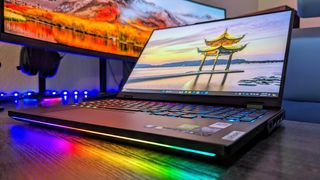

Specifications
Reasons to buy
Reasons to avoid
Lenovo didn't make too many changes to its Gen 9 Legion Pro 7i, but that's because the Gen 8 model was so close to perfection. The latest flagship gaming laptop received a performance hardware bump, a new display option, an extra USB-C port and better build quality, and some new config options.
Lenovo goes all-out right from the start, with a 14th Gen Intel Core i9-14900HX CPU, NVIDIA RTX 4080 or RTX 4090 Laptop GPU, up to 32GB of DDR5-5600MHz RAM (upgradeable), and up to dual 1TB M.2 PCIe 4.0 NVMe SSDs.
Battery life is understandably abbreviated, but as Zachary Boddy says in their Legion Pro 7i (Gen 9) review, "The latest [model] has more than enough firepower to play all the latest and greatest PC games for years to come, and you'll never have to worry too much about your settings to get a stable framerate."
In terms of the display, you're looking at a 16-inch IPS non-touch panel with a 2560x1600 (QHD+) resolution, about 500 nits brightness, a 240Hz refresh rate, DisplayHDR 400 with Dolby Vision, and NVIDIA G-Sync with Advanced Optimus.
Read our in-depth review: Lenovo Legion Pro 7i (Gen 9) review: Small changes make it better than ever (and it was already great)
Most power


Specifications
Reasons to buy
Reasons to avoid
Alienware's m18 R2 is one of our favorite gaming laptops in 2024, and it's the right choice for PC gamers who want the most power possible in a (relatively) portable PC. Dell delivers an Intel Core i9-14900HX CPU with your choice of an NVIDIA RTX 4060, RTX 4070, RTX 4080, or RTX 4090 Laptop GPU, as well as up to 64GB of DDR5-5200MHz RAM (upgradeable) and up to dual 4TB M.2 PCIe 4.0 NVMe SSDs in a RAID0 setup.
In her Alienware m18 R2 review, Editor Rebecca Spear said, "I've seen some amazing gaming laptops in my time here at Windows Central, but the Alienware m18 R2 is by far the most impressive to date." It will easily handle any games you throw its way, and the 18-inch displays can easily keep up.
The cheaper screen has a 2560x1600 (QHD+) resolution, 165Hz refresh rate, 3ms response time, NVIDIA G-Sync, and 100% DCI-P3 color. For about $50 more, an FHD+ option with a 480Hz refresh rate and otherwise similar specs might make more sense for competitive gaming.
Other standout features include a CherryMX mechanical keyboard with per-key RGB lighting, loud speakers, lots of ports, Wi-Fi 7 support, and RGB lighting on the chassis.
Read our in-depth review: Alienware M18 R2 review: I review tons of laptops, and I've never seen one handle intensive graphics this well before — it's incredibly powerful
Premium gaming
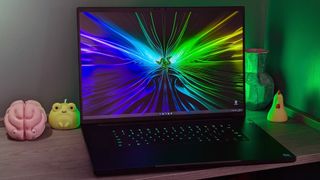

Specifications
Reasons to buy
Reasons to avoid
Razer's Blade 18 for 2024 might be one of the most expensive gaming laptops on the market today, but it remains the right choice for PC gamers and creators who want desktop performance in a device that measures just 0.86 inches (21.9mm) thin.
Its black finish offers an understated look, with per-key RGB lighting for the keyboard, top-firing speakers, Wi-Fi 7 support, and plenty of ports (including 2.5GbE LAN, HDMI 2.1, SD card reader, and Thunderbolt 5).
There are a couple of displays available for the Blade 18, both with Calman color verification. In our testing, the mini-LED option with a 2560x1600 (QHD+) resolution, 300Hz refresh rate, and 3ms response time hit 100% sRGB and DCI-P3 color, topping out at about 507 nits brightness. The other option is the "world's first 18-inch 4K 200Hz display" according to Razer, which should be paired with only the most powerful hardware.
Razer delivers a 14th Gen Intel Core i9-14900HX CPU, NVIDIA RTX 4070, RTX 4080, or RTX 4090 Laptop GPU, with up to 64GB of DDR5-5600MHz RAM and dual 2TB M.2 PCIe 4.0 NVMe SSDs. The system gets loud and battery life isn't great, but the power is there for those who need it.
In Windows Central Editor Ben Wilson's Razer Blade 18 (2024) review, he noted that the laptop "triumphs in GPU-centric benchmarks, and testing with 3D Mark's Time Spy shows both models at the absolute top spot in our database."
Read our in-depth review: Razer Blade 18 (2024) review: Still the world's most powerful gaming laptop — and your wallet is terrified
Best for creators
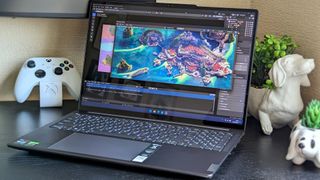

Specifications
Reasons to buy
Reasons to avoid
Lenovo's Slim Pro 9i (Gen 8) is a laptop that I think was passed by a lot of people, which is really a shame. Windows Central's Ben Wilson reviewed the 16-inch Slim Pro 9i, ultimately stating that "there are better options for a jack-of-all-trades laptop, but any creator working with digital art, photography, video editing, or 3D rendering will love the vibrant screen and powerful CPU/GPU combo in either screen size."
The laptop is built solid with a unibody design, it has a mix of six top- and bottom-firing speakers with Dolby Atmos support, the keyboard is outstanding, and there's a varied selection of ports with which to work.
Perhaps the most impressive part of the laptop is its 16-inch mini-LED touch display with 3200x2000 (3.2K) resolution. It offers incredible contrast, perfect color reproduction across gamuts, 165Hz refresh rate, Dolby Vision support, and VESA DisplayHDR 1000 certification.
Performance is strong despite the laptop's thin design, and creators and developers shouldn't have any issues. Lenovo packs in a 13th Gen Intel Core i9-13905H CPU, NVIDIA RTX 4050 or RTX 4060 Laptop GPU, 32GB of LPDDR5x-6400MHz RAM (soldered), and a 1TB M.2 PCIe 4.0 NVMe SSD for speedy storage.
Read our in-depth review: Lenovo Slim Pro 9i laptop review: Close to absolute perfection for creators
Choosing the best Core i9 or Core Ultra 9 laptop in 2024
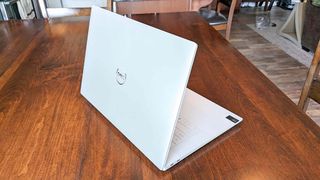

Our favorite Windows laptop with a Core Ultra 9 CPU is Dell's XPS 16 (9640). It was good enough to receive a Windows Central Best Award, and it should be the laptop that most people check out first. It offers a ton of power, a stellar 3.2K OLED display, quality speakers, and a sleek design. You're looking at spending about $2,650 for the Core Ultra 9 model.
If you aren't interested in the lattice-free keyboard, seamless glass touchpad, and touch function buttons, I recommend having a look at Samsung's Galaxy Book4 Ultra. It also received a Windows Central Best Award thanks to its slim and light clamshell design, outstanding AMOLED display, and strong performance. The Core Ultra 9 model with NVIDIA RTX 4070 Laptop GPU costs about $3,000 at Samsung.
And for gamers, we have three reviewed recommendations. The Lenovo Legion Pro 7i (Gen 9) will likely suit most people, while the Alienware m18 R2 is better for those who want the most power possible. If you have deep pockets, the Blade 18 for 2024 remains the premium gaming laptop to beat.
What's the difference between Core i9 and Core Ultra 9?
Intel's "Meteor Lake" Core Ultra mobile CPUs for 2024 shook up the company's branding, and you now have the Core Ultra 9 option alongside the more traditional Core i9 chips. One major difference between these chips is the Ultra's Neural Processing Unit (NPU) that helps classify it as an AI PC.
The Intel AI Boost NPU in the Core Ultra 9 185H hits around 10 TOPS of power for local AI acceleration, helping with things like Windows Studio Effects. Intel's next-gen "Lunar Lake" mobile chips are expected to bump the NPU to 45 TOPS, which makes the cut for Copilot+ features. Intel's Core i9-14900HX chip lacks an NPU, instead focusing on pure performance for gaming and heavier workloads.
Here's a closer look at how the chips compare.
| Header Cell - Column 0 | Intel Core Ultra 9 185H | Intel Core i9-14900HX |
|---|---|---|
| Cores (P / E) | 6 / 8 (16) | 8 / 16 (24) |
| Threads | 22 | 32 |
| Turbo freq. | 5.1GHz | 5.8GHz |
| Base TDP | 45W | 55W |
| NPU | Intel AI Boost | N/A |
| GPU | Intel Arc (2.35GHz) | Intel UHD (1.65GHz) |
You can see how the Core Ultra 9 runs at a lower base TDP, helping improve battery life. It also has a more powerful integrated graphics chip, which really only makes sense for laptops that lack a discrete GPU.
Get the Windows Central Newsletter
All the latest news, reviews, and guides for Windows and Xbox diehards.

Cale Hunt brings to Windows Central more than eight years of experience writing about laptops, PCs, accessories, games, and beyond. If it runs Windows or in some way complements the hardware, there’s a good chance he knows about it, has written about it, or is already busy testing it.